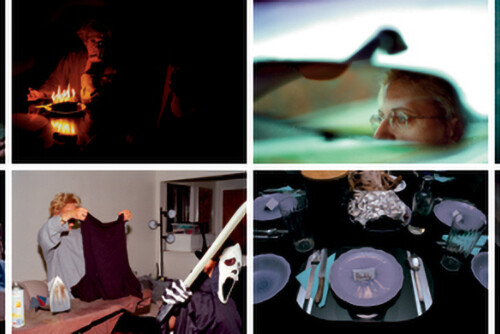The CD-CP has been replicated in thirteen cities, and New Haven police and YCSC staff regularly consult with police from other cities in the hope of sharing what they have learned and spreading the model. The day I was there, a visiting officer from Providence, Rhode Island—which is developing a program modeled on New Haven’s—picked up on Marans’s cue, noting that Hassett’s decision not to arrest the parents for child endangerment had likely spared the boy’s siblings significant trauma.
“We’re not going to arrest our way out of poverty,” New Haven police chief Francisco Ortiz told me after the meeting, “so we have to start here, thinking about the children.”
The Chapel Dwight neighborhood was, as Hassett dryly put it, “busy” on the spring afternoon when I accompanied him on his rounds through the four-square-mile district in which he had spent the past eight years. “Wussup? Wussup?” Hassett called gamely to young men on stoops and street corners as we crawled through the neighborhood at ten miles an hour, windows open. Some offered a brisk nod. Most looked away. One grimaced visibly.
A burly white man with a bristly, Mohawk-like strip of hair dividing his otherwise-shaved head into neat halves, Hassett wore a shirt and tie underneath his uniform. His oval sunglasses sat mid-forehead, obscuring his eyebrows. Before the need for a steady paycheck drove him to police work two decades earlier, Hassett had been a stage and screen actor in London and Los Angeles. He appeared in films including Body Double and The Spy Who Loved Me, and he played one of Harrison Ford’s stormtroopers in The Empire Strikes Back. He has been cast as a police officer more than once, but he likened his current role to that of a country doctor.
Much of Hassett’s work on the afternoon I spent with him involved cleaning up the messes that had filled the agenda of the morning’s CD-CP meeting. At the police station, reporters from two local television stations were awaiting comment on the stray toddler. Hassett assumed a classic cop stance for the camera—feet wide apart, hands folded—but offered the reporters little else. It was, after all, not much of a story—working parents, a houseful of kids. The reporters’ questions trailed off and they packed up their equipment.
Hassett pulled up outside the neighborhood middle school—a block-sized brick square on barren grounds—as it was letting out. “Hi poleeeeeceman!” a girl shouted. Hassett tried his “wussup” again on a crowd of boys heading for the bus. Finally, he got an audible “wussup” in return. His face offered no clue as to whether he heard the sarcasm in the boy’s tone.
A school crossing guard accosted Hassett, outraged about the two-year-old: “How could you forget the baby?”
Inside, a secretary also had an opinion to share: “I wanna beat that lady up about that baby last night.”
“It’s not as bad as you think,” Hassett told her.
“I think kids should be very closely supervised.”
“It’s not as bad as you think.”
“A mistake? OK. But I still wanna whup her.”
“Everyone was out for blood last night,” Hassett told me. “They wanted to see somebody coming out in cuffs. It’s a little more time-consuming to look at the real situation—a family that is overwhelmed and needs childproof locks on their door. I’m trying to bring everyone down a bit. The family is probably mortified.”
The school principal stopped Hassett to confer about the mother who had left the message threatening a teacher. Hassett listened quietly as the principal offered his perspective. “She said some very inflammatory things,” Hassett told me later of the middle-schooler’s mother. “We certainly had enough probable cause to arrest her. Would that have solved anything? If you’re looking at the child as being the focus of the behavior, would that have helped the child? I don’t think so.” Hassett was, however, worried about the girl, who kept getting into fights at school, and he hoped the threat of police involvement would be leverage enough to get the reluctant mother to allow her daughter to be seen at the YCSC.
On the standard New Haven police-report form, there is a space in which an officer is required to list all children present at the scene and check off whether the YCSC was consulted. If a caregiver declines services and the officer thinks the kids need them, he’ll knock on the door in a day or two and extend the offer again. I asked Hassett about the view that police exist to ensure public safety, not act as “social workers” or “babysitters.” Hassett bristled at the distinction. Encouraging kids to see cops as the enemy, he explained, does not enhance public safety—nor, for that matter, police safety. One of the archetypal CD-CP stories, in fact, involves a child, who had been well treated by police in the past, saving an officer’s life by warning him of an imminent ambush.
“For a lot of the kids, their parents getting locked up is not new,” Hassett said. “It’s part of daily life. I have to go back to the house again and again. Do I wanna fight every time I go there? No. Do I wanna be able to have them open the door instead of kicking it down? Yes. Having a rapport with the family helps get the job done in a safe manner.
“The last thing I want to be seen as is the bad guy coming in there. We’re the good guys. So you take a little extra time. You sit down, say, ‘How you doin’,’ look around and ask about the toys he has—just like you would with your own kids. When you go into a house to investigate an incident, your work isn’t done until you take a look at those kids.”
This kind of interaction, Steven Berkowitz observed, can do more than encourage kids to open the door to the cops. “If you set it up so that authority and the police are the bad guys, then what reason would any child have to think that doing the right thing is going to be good for them?” he asked. “Now here’s the supreme example of authority in society saying, ‘I’m here, I’m listening, and I’m not bullshitting you.’ It’s a huge difference. Do I think it’s going to detraumatize or heal? No. But I think it gives them a rope.”



